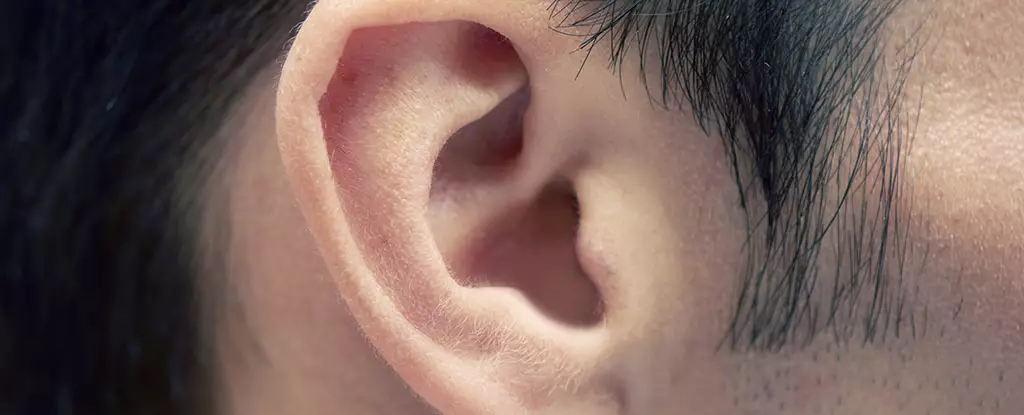Parkinson’s disease remains one of the most challenging neurological disorders to diagnose early, despite decades of research. The current standard—relying heavily on clinical observation and costly brain imaging—often delays diagnosis until the disease has significantly progressed. A recent study from Zhejiang University has proposed an innovative, if unconventional, method: analyzing volatile organic compounds (VOCs) in earwax to detect Parkinson’s. This strategy attempts to capitalize on the relative seclusion and stability of earwax compared to sebum on the skin, which has been previously examined but proven unreliable due to environmental exposure. Although seemingly peculiar, this shift toward using an easily accessible biological sample like earwax holds extraordinary potential, but its promise must be tempered by critical scrutiny.
The Science Behind the Scent
The idea that Parkinson’s disease might manifest as subtle alterations in body chemistry—particularly through inflammation and neuronal stress influencing sebum production—has been around for a while. What makes earwax a more appealing candidate is its protected environment in the ear canal, potentially preserving delicate chemical signatures better than skin oils exposed to air and contaminants. The study identified four specific VOCs—ethylbenzene, 4-ethyltoluene, pentanal, and 2-pentadecyl-1,3-dioxolane—that differed significantly in Parkinson’s patients. These compounds could form a “chemical fingerprint” for the disease, facilitating a diagnostic tool that transcends subjective clinical judgment.
While on paper, this sounds revolutionary, one cannot ignore the limitations inherent in using earwax VOCs as biomarkers. The chemical complexity of human secretions means many factors—diet, environment, concurrent illnesses—can alter VOC profiles. Relying on a small subset of compounds without broader validation risks oversimplification and false positives, particularly given Parkinson’s diverse manifestations.
The Artificial Intelligence Edge
Perhaps the most exciting aspect of the study is the integration of artificial intelligence through an AI olfactory system (AIO). Feeding the VOC data into machine learning algorithms resulted in a striking 94.4% accuracy in distinguishing Parkinson’s patients from controls. This suggests that advanced pattern recognition can tease out subtle, inaccessible signals from complex datasets—something humans alone would struggle to do consistently.
However, here too the initial results should be handled with cautious optimism. The sample size of just over two hundred participants is far from sufficient to claim robustness. Machine learning models thrive on large, diverse datasets, and their predictive powers often falter when exposed to unfamiliar populations or conditions. Overfitting—a common pitfall where a model performs well on training data but poorly in real-world scenarios—is a real risk until replicated in larger, multinational cohorts.
The Path Forward: Hurdles and Hope
From a clinical and societal perspective, this research shines a light on the urgent need for early, inexpensive, non-invasive diagnostic tools for Parkinson’s disease. Earwax-based VOC detection ticks many boxes: it’s less invasive than blood draws or brain scans, less expensive, and potentially scalable for routine screening. This could democratize Parkinson’s diagnostics, especially in resource-poor settings where costly imaging is impractical.
Yet, prematurely heralding this method as a diagnostic game-changer would be irresponsible. The researchers themselves acknowledge the necessity of extensive validation involving diverse populations, multiple disease stages, and longitudinal studies. Without this, we risk pursuing a “quick fix” that oversimplifies a disease characterized by complex biochemical and neurological underpinnings.
Moreover, while the study offers clues about disease mechanisms—suggesting a link between brain inflammation and peripheral biochemical changes—it doesn’t yet elucidate causality. Are these VOCs early markers signaling neurodegeneration, or byproducts accumulating later in disease progression? This distinction is crucial for both diagnostics and therapeutics.
Implications Beyond Diagnosis
From a policy and research funding perspective, this study encourages a balanced, moderate enthusiasm. Innovations like this must be met with increased support for methodical clinical trials and cross-disciplinary collaboration—bringing together neurologists, chemists, data scientists, and ethicists. This center-wing liberal stance emphasizes transparency, equitable access, and rigorous scientific inquiry while avoiding hype-driven policy decisions.
In the long run, tools leveraging biomolecular signatures and AI may revolutionize not only Parkinson’s detection but also the broader landscape of neurodegenerative diseases. However, cultivating public trust requires openness about the current limitations, potential biases in AI models, and realistic timelines for clinical adoption. Without this, even the most promising advances risk being overshadowed by skepticism and disappointment.
In essence, earwax-based VOC detection for Parkinson’s diagnosis is an intriguing frontier filled with potential, yet demanding prudent, rigorous exploration before reshaping medical practice.



Leave a Reply